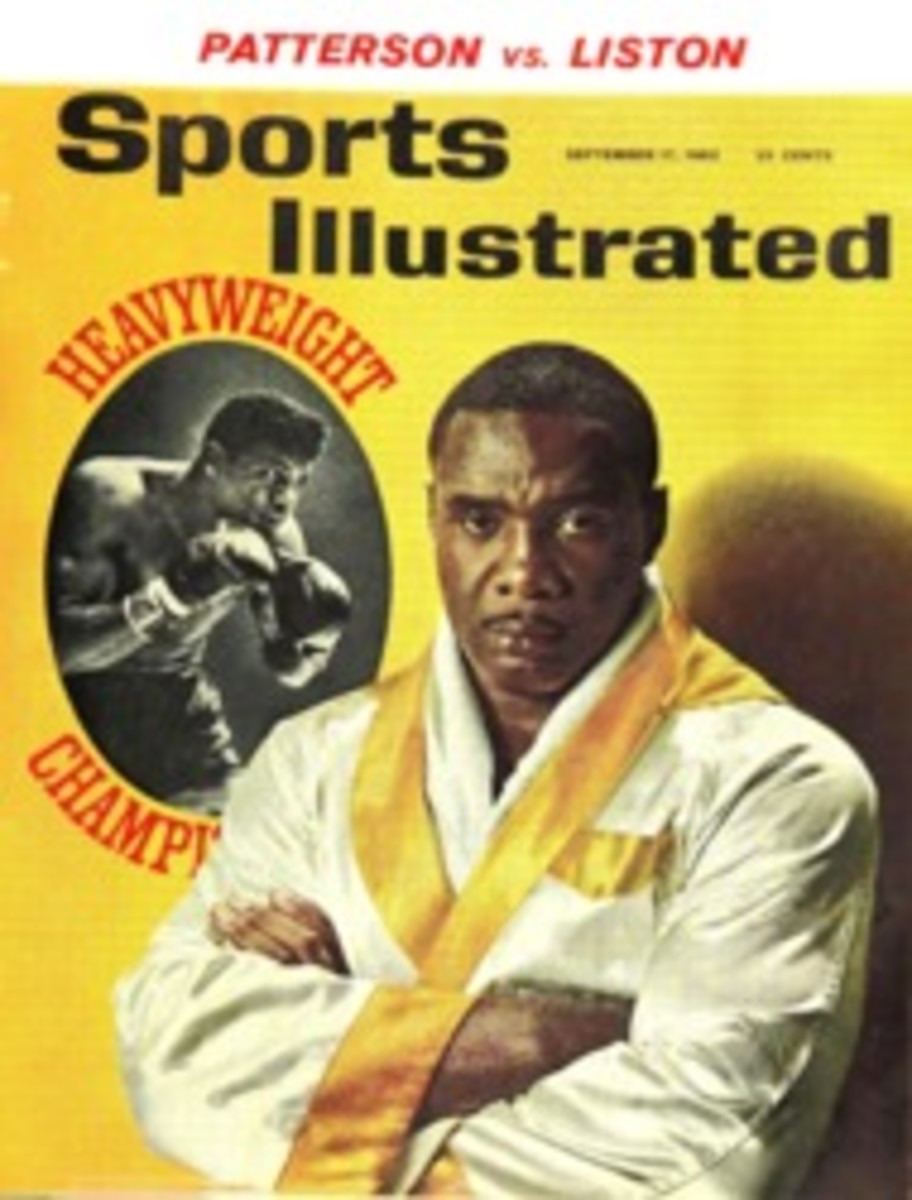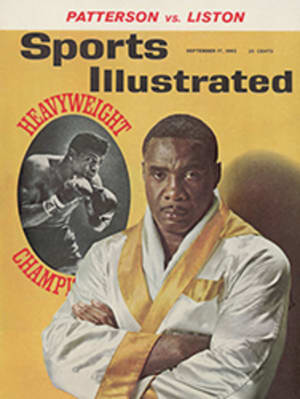
ALL EYES ON THE CHALLENGER
As the gun fires to send Weatherly and Gretel across the starting line on Saturday, it will be the 18th time in 92 years that a challenger has tried to carry home the trophy won by the schooner America under the eyes of Queen Victoria. None has succeeded—in 55 cup races spanning almost a century, the defenders have lost only five.
By present standards of sportsmanship, not all of the challengers have been given a fair chance. This is not the case with Gretel. Seldom if ever has an overseas invader in any field been helped so far along the road to victory by a nation anxious to make things equal. "It's hard to tell where the American part ends and the Australian begins," exclaimed an observer last week. From her epoxy-paint bottom, smoother than a gun barre, to the aluminum extrusion that forms the towering mast, Gretel is indebted to her host country. Winches, rigging wire, many fittings—even sails—have been made available, while her very lines stem from Vim and were tested in a model tank in the un-down-under city of Hoboken.
Contrast this generosity with the attitude toward Cambria, the first British vessel to make a foray, in 1870. She was required to sail a single race against a fleet of 23 crack yachts. For the next challenge, despite published protests that a "match should be won when made," it was conceded that the invading Livonia would be pitted against a single boat, but there was still a catch: the committee reserved the right to name her adversary on the morning of each race, depending on the weather. Four potential defenders were ready, all best in different strengths of wind. As recently as 1958 there was a stricter interpretation of the clause in the deed of gift stating the yacht must be "constructed in the country to which the challenging club belongs."
When I sailed aboard Sceptre in England four months before the last cup races, the crew expressed a wish for enough Zeta cloth—a lightweight, strong, nonporous synthetic fabric—to make a spinnaker. I promised to send them some if the cup committee expressed no objection. It did. The late Commodore W.A.W. Stewart, chairman of the committee, informed me that sending American fabric to a challenger might violate the country-of-origin clause. Now, under an obviously relaxed interpretation of the clause, Gretel Helmsman Jock Sturrock is able to say: "We have available a full complement of Hood and Ratsey sails to use—if we want to."
This is not intended to belittle the Australian achievement. But it is true that without a relaxation of the rules by the present cup committee there simply could not have been a challenger from down under. No one unfamiliar with the complexity of a modern 12-meter yacht realizes the technological background necessary to its production; while harnessing the wind for propulsion may be anachronistic, to do it competitively requires an extensive leavening of aerodynamic materials and techniques.
There are not likely to be any secrets on either side. The Aussies followed the early trial races closely—a boat carrying Archie Robertson and Jock Sturrock was closest to Columbia when she lost her mast, and picked up the crew member knocked overboard—and are familiar with every phase of American starting tactics and sail-handling methods. During the week after the selection of a defender the rival vessels stood side by side on the ways of Newport Shipyard as final modifications took place, all work open to mutual inspection.
Gretel, incidentally, effected a rather major change for so late in the season by moving the mast forward 19 inches. "She has always had a weather helm," concedes Designer Alan Payne. "It didn't seem so bad back in Melbourne, but it seems bad here." Jock Sturrock, now that he has been named helmsman, is delighted. "Nothing I dislike more than fighting the wheel. I have a Payne-designed sloop of my own back in Australia, and she balances perfectly. Gretel will be better for the change." As the headstay has been shifted a matching distance, no recutting of sails is required. At the same time, the oversize mainsheet horse has been discarded and the American system of blocks and mainsheet lead adopted. Now little remains of the Australian attempt to break away from standard 12-meter practice except the linked coffee grinders for handling head-sails (SI, July 9).
Thus Gretel will meet Weatherly as closely equalized as it is possible for boats of widely different origins and national backgrounds to be. Yet, as the series of trials to choose a defender has proved, it is impossible to be certain of the relative abilities of yachts in match racing until they meet in actual competition—and even then superiority may hinge on the whim of the winds and vary from day to day.
The known advantages of Weatherly begin with the men on deck. Bus Mosbacher has proved himself the outstanding helmsman of this era, both in his grasp of tactics and his ability to make a boat move through the water, especially to windward. After four years of watching Bus on the starting line I am still amazed at his knack of bending almost any situation to his advantage. It seems to stem from an uncanny sense of timing—not just the minutes ticking away on the starter's chronometer but how the boats will come together after sailing different courses at different speeds. No matter what his opponent may do, Mosbacher is usually where he wants to be when the gun sounds.
Backing up Mosbacher in the cockpit are shipmates from Vim four years ago—Dick Matthews as navigator and Don Matthews as mainsheet man and tactical spotter. Forward is Vic Romagna, veteran of both Weatherly and Columbia. Adding Buddy Bombard and Doug Mercer, six of the 11 men aboard were blooded in the '58 campaign. The teamwork necessary to perform intricate yet split-second maneuvers can only be gained through competition, and the Weatherly team has had ample.
Weatherly achieved 15 victories against five defeats in the trials, but Gretel is an unknown quantity. Her yardstick has been the venerable Vim, whose present capabilities can only be judged by her failure to win a single race during this year's New York Yacht Club cruise, against five victories in seven starts in 1958. Sturrock and his crew will start their first big-boat match race on Saturday when they come up against Bus Mosbacher and Weatherly. This is something like trying to lasso a tiger the first time you see a tiger.
On the challenger's side is Sturrock's proved ability under pressure in other classes, a rigorous training program with much hard drill, a crew chosen after almost two years of tryouts and what might best be called the Aussie competitive flair—the determination, dedication and dash that have carried a small nation to the top in other sports.
The weather also may be on the Australian side. Unless Gretel is capable of the biggest surprise within memory, Weatherly must be considered the fastest yacht of her class ever built in light and moderate winds, say up to 15 knots. Changes in ballasting have vastly improved her stability, and beyond question she now qualifies as a good all-round performer, not likely to be outclassed in any conditions. But how far up the velocity scale her power extends is a matter of question in the minds of many experts. True, Weatherly went well during the final trials in winds of better than 20 knots, but somewhere in this area the challenger might begin to give an interesting account of herself.
I cannot forget watching from Gretel's cockpit her enormous superiority over Vim while going to windward in a rail-down breeze (SI, Sept. 3). While some observers who have watched from astern feel she, too, may be a trifle tender in. a blow, I was impressed by her drive through the seas, her ability to point high and foot well and the smartness of her crew in tacking—as well as the angle between tacks, fully as good as Weatherly's.
While meteorological records do not indicate appreciably stronger average winds in mid-September than in midsummer, for a few days anything could happen. Not only is it the season of the equinox, but already the fresh chill gradient winds of autumn have tinted the trees of Newport. Come zephyrs between frontal systems, expect Weatherly in a walk. But come a few days of heavy winds and rough seas, and there just might develop drama sadly lacking for the spectator fleet in recent cup matches, as well as in the trials this summer.
PHOTO

